Over the past decade Shelby David Meier has shifted from making objects that reference other works of art—“art for art’s sake”—to conceiving and creating objects and installations that question art as a commodity. While working as an art handler, Meier began to reconsider works of art as they were in storage and transit, not on display in any venue. For Meier, “the materiality and agency of objects took on a new meaning when the work became more about logistics and budgets.” He admits that his intent is not to make something that can be easily grasped by viewers, but to facilitate change and growth from within. For his Cell Series installation, Meier extracts from the “storage” of his work, recontextualizing the objects within the jail cells of the 1877 structure.
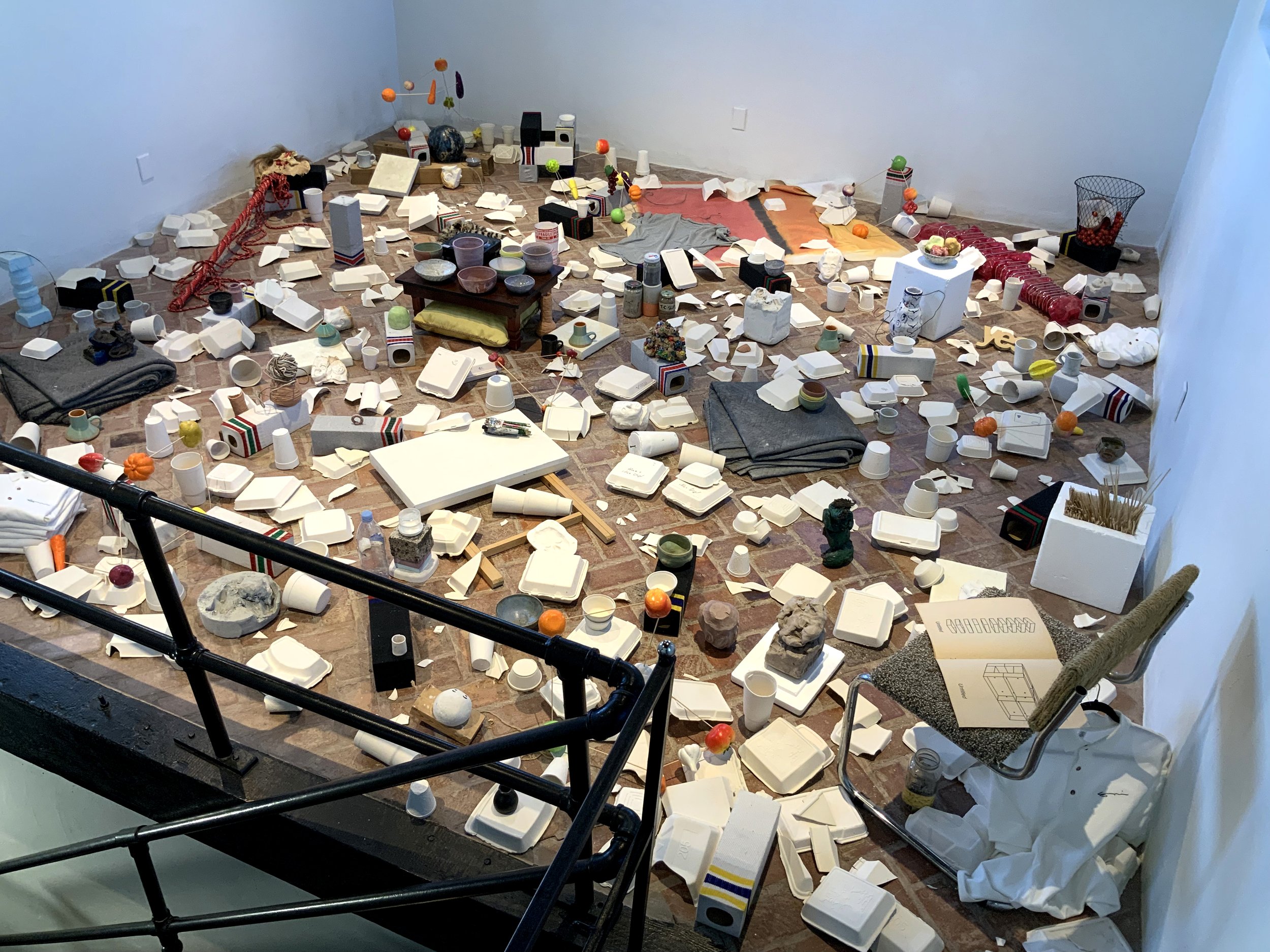
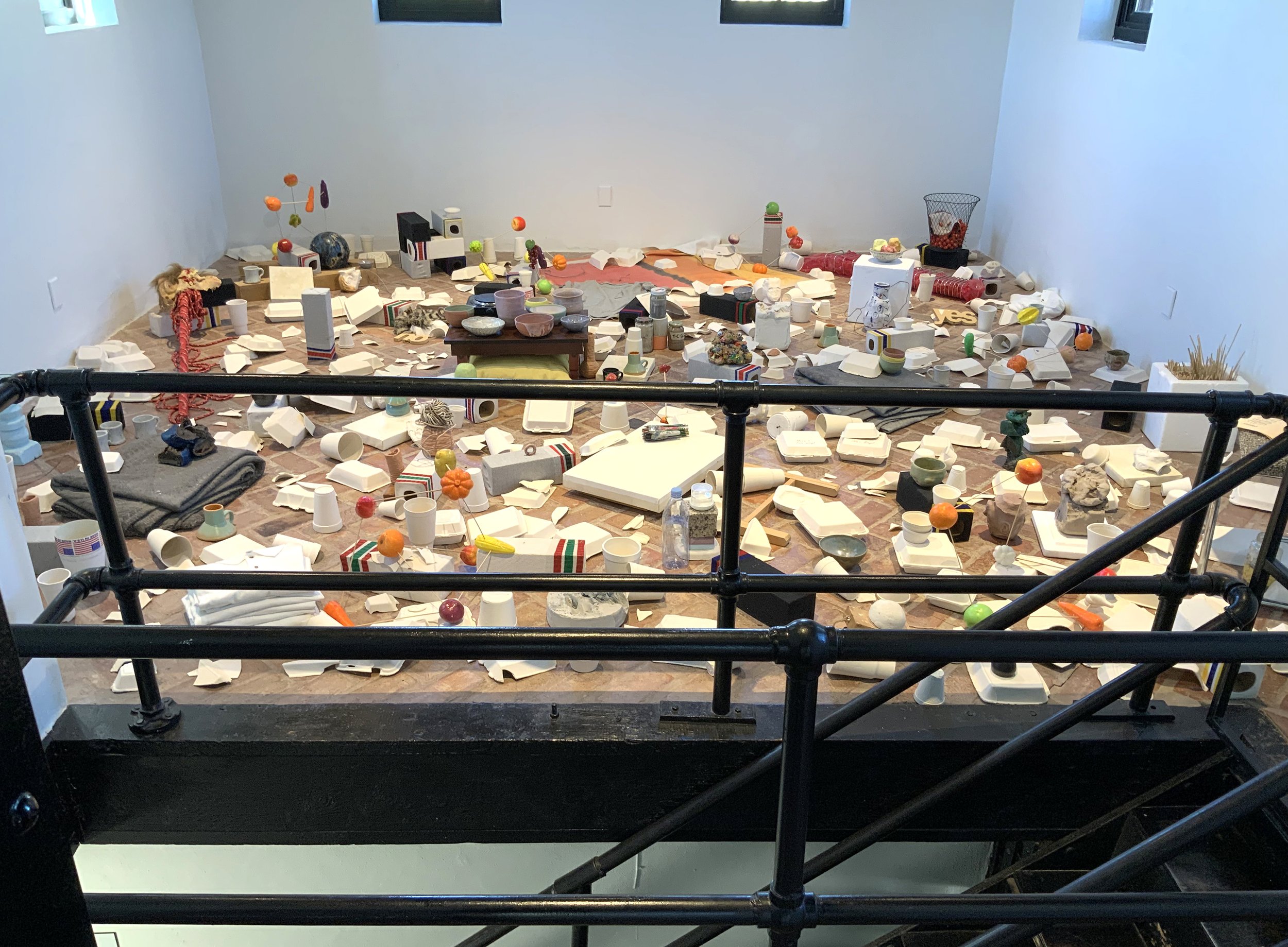
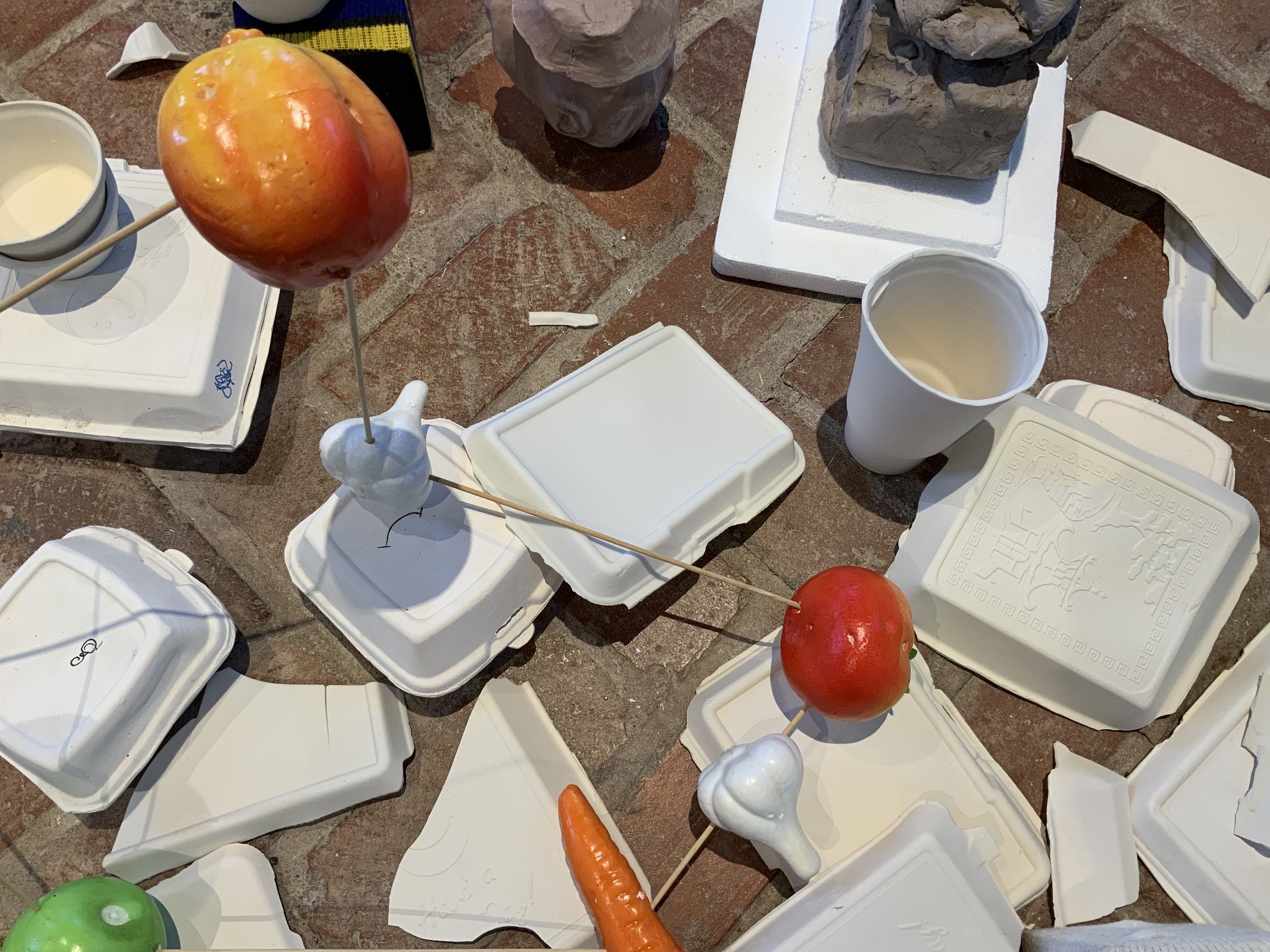
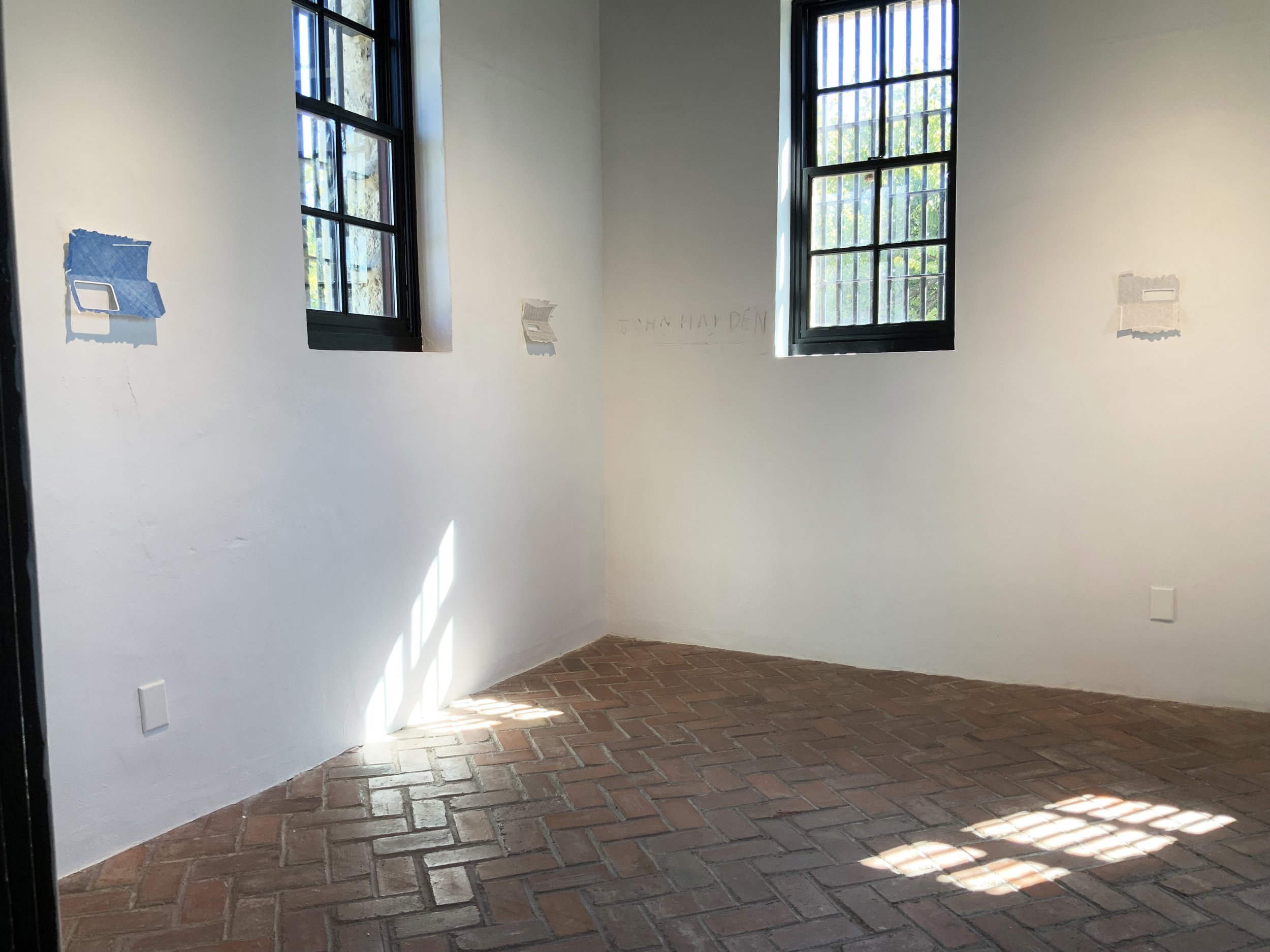
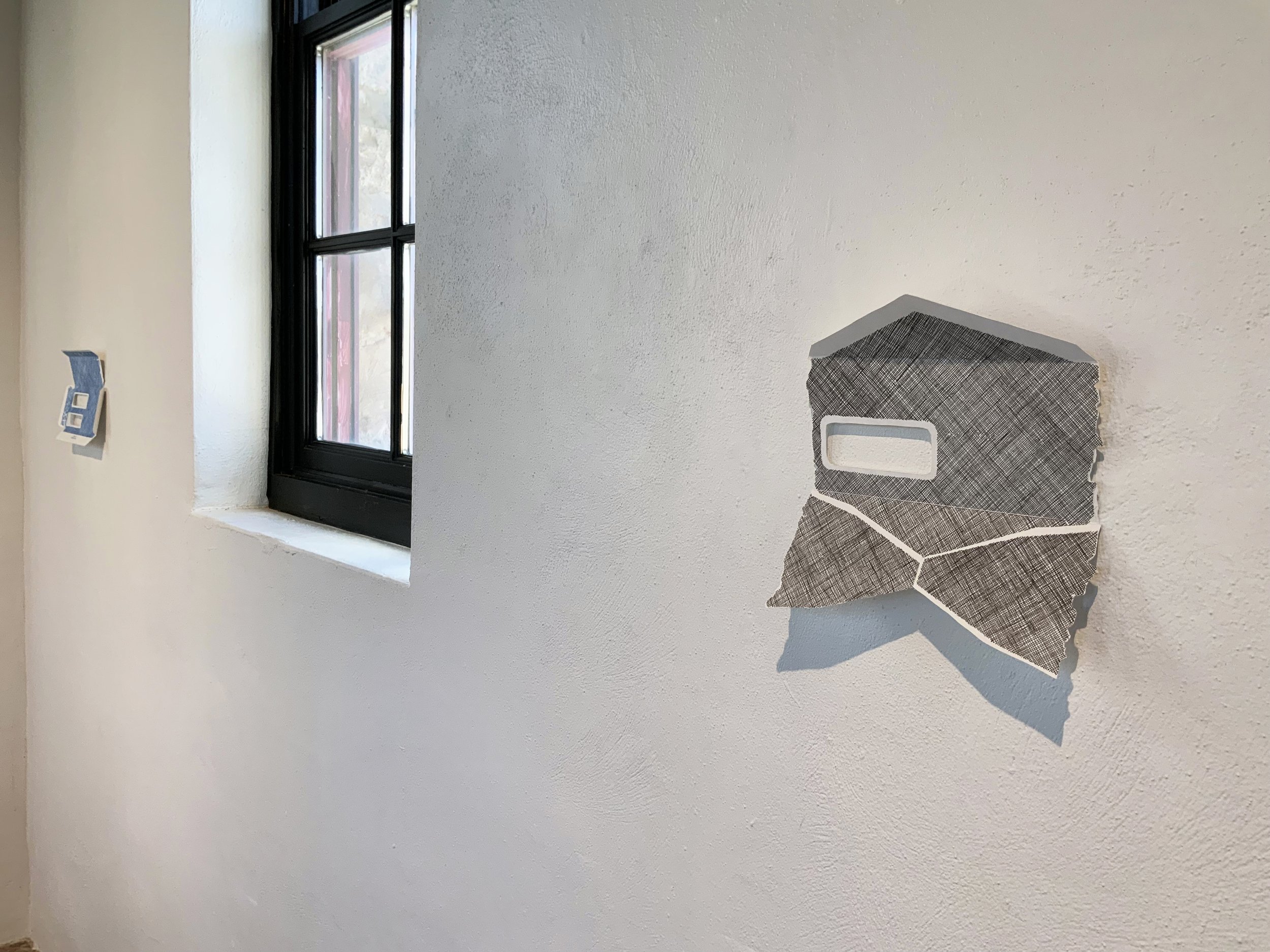

Patrick Kelly, Old Jail Art Center Director and Curator, interview with artist Shelby David Meier
PK: Your art practice has varied since I first became aware of your work. Can you define and describe stages or bodies of work over the past decade or so?
SDM: My work has always been rather varied in material and form as I try to suit it to the things I'm thinking about at that time. I've always been interested in using my work to investigate and turn over ideas that then result in an idea for an artwork or installation. When I was first getting started as an artist I wanted to root my ideas in art history and artists that came before me. I think it was a way for me to legitimize what I was doing. If I made work about what was already an accepted work of art, I was already joining in on a validated conversation. So much of my early work was literally art about art. Or “art for art's sake.” When putting together a show I would try to be very intentional about each element and how they would relate or overlap in different ways, visually or conceptually. I was very interested in using language and text, and I think a major theme was what it meant to consume or take something in. I was interested in comparing popular culture to ideas or concepts found in modern and contemporary art and was willing to use any material. I think by the time I went to grad school in 2015 I thought I would continue that kind of work, but the more I learned the more I realized how much I didn't know or understand. Or maybe another way of putting it is the more I tried to explain something, the less understandable it became. That may not have been the intention of my graduate program but it made me realize I was not interested in making something that could be easily grasped or explained. I became more interested in the act of making something and observing it. After grad school, I worked as an art handler installing work in people's homes and in museums and it really contributed to the way I think about how art exists when it's not on display, but rather in transit or storage. The materiality and agency of objects took on a new meaning when the work became more about logistics and budgets. I think the biggest shift I have made over the last ten years or so was re-orienting my practice as an artist from creating something to inspire change in the audience to creating something to facilitate change or growth within myself.
PK: I think your most recent works do “inspire” viewers. Your installation, A Part of the Whole, at the Nasher Sculpture Center in 2021, inspired thoughts related to the environment, permanence and impermanence, isolation, etc. Can you pinpoint the type of change or growth you are seeking in your practice now?
SDM: I guess I could have framed it a little differently. I hope that people will take something from my work, but I think as I get older I feel more pressure to create something that I am proud of and challenged by personally, than creating something with the audience in mind. For A Part of the Whole and work that I have created over the last few years is a realization that so much of what goes into creating artwork is unseen. There is a lot of action and energy used in getting from one place to another, whether evolving one idea into a new realization or moving material around, from place to place. Cleaning and organizing space is just as important to the process as putting paint on a canvas or whatever. And as much as that process is important, I'm not really interested in laying all of that out there to make it visible because I think it's important that not all of it is understood; that maybe it's buried there underneath. It is important that it exists but isn't visible.
There certainly was an environmental aspect to my work and the effect we have on our surroundings. The climate crisis is a serious issue that needs to be addressed, but it's so ingrained in my day-to-day mindset that I can't really say that is what my work is about. In my work I am interested in what it means to live in a world where that is something I have to think about and consider every day. When I first started studying and making art, I felt like with each work there should be something to "get" or understand, where one could walk away and say what it is about—a "moral to the story" kind of feeling. And those things are important when trying to contextualize and categorize work for a museum or an art history book, but that's only one part of the whole experience. I'm more interested in how the work is encountered than how it can be explained. When I'm working on something like the security envelopes, it is a time to really sit and observe my thoughts, a kind of passive meditation, where through the action and repetition I can lose the sense of time or become keenly aware of it. I don't expect other people to see everything that I put into the work, that time is for myself, but after all of that work, I am happy to share the results.
PK: Let’s dive into a body of work you have alluded to indirectly. You created a series based on discarded materials including business envelopes and porcelain Styrofoam containers. Can you talk about that series—how it was conceived and perhaps the process—for those who are unaware of how painstaking it can be?
SDM: Well, the Styrofoam containers are made of porcelain and the envelopes are made of paper. The porcelain Styrofoam containers and cups came from consideration of the different materials, ceramic vs Styrofoam. Both are striking technological advancements in material when they were first invented. The first evidence is ceramic technology dates back tens of thousands of years, while plastic was invented within the last century. They both serve functions for holding food and both materials do not break down for long periods of time.
With the envelopes, they came from a different kind of thinking. The simple patterns used to create confusion to protect valuable information are striking in their own way. And by opening them to reveal the hidden interior it became a kind of field or pattern that I could kind of get lost in or confuse my vision. A lot of these envelopes are there to protect personal information and tearing them open feels like exposing something. To recreate it by hand felt like a step that was a way to imitate the mechanical nature of it all and bring a human touch to it.
The two series work in different ways. The concept for the porcelain works seemed to guide the process, but with the envelopes, it was more an act of doing and seeing what ideas would develop in the process.
PK: I cling to the idea that the best way to analyze a civilization is to go through their trash piles—more so than their monuments and works of art? It seems like I have asked this question before of an artist, but what do you think our detritus will say about us thousands of years from now?
SDM: I think a practical answer to that is that our trash will show how much we love plastic. It’s so prolific because it’s so practical and affordable. And it’s evidence of our technical abilities to arrange and manipulate material at a chemical and molecular level. But I think it might also reflect a desire for immediate results and convenience. I also think it might be confusing because so much of our “information” and data is locked in to this plastic material and can only be accessed with other devices that will not exist in the future. I think that’s one of the most interesting parts about interpreting history, the parallactic difficulty of understanding something from differing perspectives.
PK: There is a lot we could dive into with that answer but I will refrain for now. I will ask, do you find being forced to talk or write about your work advances it more than just working through by just creating? I hope that makes sense. Often artists work in isolation and being forced to consider what you’re actually doing can be self-enlightening.
SDM: I certainly think talking and writing about my work is crucial to the process. A lot of what I do in my sketchbook is often more writing and working through ideas than drawing sketches. It’s a place to free write and let ideas flow.
I also half joke with friends that the whole reason we make art is so we have something to talk about. Art has always felt like a way to introduce and contemplate new perspectives and ideas for me. It’s just the introduction to an ongoing conversation.
PK: Since we do the interview prior to the installations, tell me about your intent for the two Cell Series galleries.
SDM: For the first gallery I plan to lay out all of the art work I have been keeping in a storage unit in Dallas since I moved a little over a year ago. I am going to lay it all out on the floor to be able to take it in all at once. I see it as a way to see a lot of different moments from my life and practice all at once. It’s a way of thinking about all of the time that I’ve spent and seeing it as a cohesive project as well as specific moments in time and place. For the second gallery, I plan on installing a number of my security envelope works. I think they lend themselves to the physical space, in that they are also interiors with window cutouts that expose patterns reminiscent of bars or a screen.
Maybe the first gallery is a reflection on my trajectory as an artist and the second is more exemplary of the concepts and interests in my current practice.
The 2022 Cell Series is generously supported by the McGinnis Family Fund of Communities Foundation of Texas, Kathy Webster in memory of Charles H. Webster, and the National Endowment for the Arts, with additional funding from Jay & Barbra Clack, Margaret & Jim Dudley, and Jenny & Rob Dupree.


